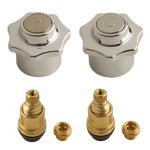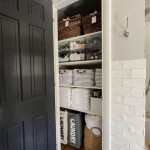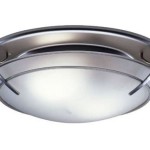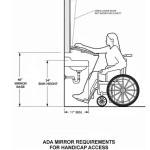Mold On Grout In Bathroom: Identification, Removal, and Prevention
Mold on grout is a common problem encountered in bathrooms. The warm, humid environment fosters mold growth, and grout, being porous, provides an ideal surface for it to take root. Addressing this issue promptly is crucial, not only for aesthetic reasons but also for maintaining a healthy indoor environment.
This article provides a comprehensive guide to identifying, removing, and preventing mold from forming on grout in bathrooms. Understanding the causes of mold growth, utilizing appropriate cleaning methods, and implementing preventative measures are all essential components of effective mold management.
Identifying Mold on Grout
Accurate identification is the first step in tackling mold growth. Mold on grout typically appears as small, discolored spots or patches. The color can vary depending on the species of mold present, but common colors include black, green, brown, and even white. These spots may appear speckled at first and gradually spread to cover larger areas of the grout lines.
While discoloration is a primary indicator, it's important to differentiate mold from mildew. Mildew tends to be a surface growth that appears powdery and can often be removed with a simple cleaning solution. Mold, on the other hand, penetrates deeper into the grout and is more difficult to remove. Pay attention to the texture and depth of the discoloration. Mold often has a slightly raised or fuzzy texture, indicating a more established presence within the grout pores.
Another crucial aspect of identification is the location. Mold is most likely to appear in areas with high moisture content, such as around the shower, bathtub, and sink. Areas with poor ventilation are also prime locations for mold growth. Regularly inspect these areas for any signs of discoloration or unusual smells. A musty or earthy odor can often indicate the presence of mold, even when visible signs are not immediately apparent.
If you are unsure whether the discoloration is mold or something else, consider using a magnifying glass to examine the area closely. Mold often has a distinct, web-like structure when viewed under magnification. You can also try a simple test by applying a drop of diluted bleach to the affected area. If the discoloration lightens or disappears within a few minutes, it is likely mold. However, exercise caution when using bleach, as it can damage certain types of grout and surfaces. Always test in an inconspicuous area first.
Finally, if the problem persists despite your best efforts, consider consulting a professional mold remediation service. They have the expertise and equipment to accurately identify the type of mold present and implement the most effective removal strategies. This is particularly important if you suspect that the mold growth is extensive or if you have individuals in your household with sensitivities to mold.
Removing Mold from Grout
Once mold has been identified, the next step is to remove it. Several methods can be employed, depending on the severity of the infestation and your personal preferences. It's important to remember to always wear protective gear, including gloves, a mask, and eye protection, when working with mold to prevent inhalation and skin contact.
A common and effective solution for mild mold growth is a mixture of baking soda and water. Create a paste by mixing the two ingredients and apply it directly to the affected grout lines. Let the paste sit for several minutes to allow it to penetrate the grout pores. Then, scrub the area vigorously with a stiff-bristled brush. Rinse thoroughly with water and dry the area completely.
Another popular option is a solution of white vinegar and water. Vinegar is a natural disinfectant and cleaner that can effectively kill mold. Mix equal parts white vinegar and water in a spray bottle and apply it to the moldy grout. Allow the solution to sit for at least an hour before scrubbing with a brush. Rinse thoroughly and dry.
For more stubborn mold stains, consider using a grout cleaner specifically designed for mold removal. These cleaners often contain stronger chemicals that can effectively kill mold and remove stains. However, always read and follow the manufacturer's instructions carefully. Ensure adequate ventilation when using these products and avoid contact with skin and eyes.
In cases of severe mold infestation, you may need to resort to more aggressive measures, such as using a bleach solution. Dilute bleach with water (a common ratio is 1 part bleach to 10 parts water) and apply it to the affected grout. Let it sit for several minutes before scrubbing. However, be aware that bleach can discolor grout and should be used sparingly. Always test in an inconspicuous area first and avoid using bleach on colored grout.
For grout that is heavily stained or damaged by mold, you may need to consider replacing it altogether. Use a grout removal tool to carefully scrape out the old grout and replace it with fresh grout. Ensure that the area is completely dry before applying the new grout and follow the manufacturer's instructions for application and curing.
After removing the mold, it is essential to thoroughly clean and disinfect the entire bathroom to prevent further growth. Pay particular attention to areas that are prone to moisture accumulation, such as the shower, bathtub, and sink. Use a disinfectant cleaner to kill any remaining mold spores and ensure that the area is well-ventilated.
Preventing Mold Growth on Grout
Preventing mold growth is far more effective than constantly battling existing infestations. Implementing preventative measures can significantly reduce the likelihood of mold forming on grout and other surfaces in the bathroom.
Adequate ventilation is paramount. After showering or bathing, always open a window or turn on the bathroom exhaust fan to remove excess moisture from the air. Aim to run the exhaust fan for at least 15-20 minutes after each shower or bath. If your bathroom lacks a window or exhaust fan, consider installing one to improve ventilation.
Regular cleaning is also crucial. Wipe down shower walls and doors after each use to remove excess water and soap scum. Clean grout lines regularly with a mild cleaning solution and a brush to prevent the accumulation of dirt and moisture. Consider using a squeegee to remove water from surfaces after showering.
Address any leaks promptly. Leaky faucets, showerheads, or pipes can provide a constant source of moisture that promotes mold growth. Repair any leaks as soon as they are detected to prevent moisture buildup in the bathroom. Check under sinks and around toilets regularly for signs of leaks.
Use a sealant on grout lines. Applying a grout sealant creates a barrier that prevents water from penetrating the grout pores. This reduces the likelihood of mold growth by limiting the availability of moisture. Reapply sealant periodically, as recommended by the manufacturer, to maintain its effectiveness.
Consider using mold-resistant products. When remodeling or updating your bathroom, opt for mold-resistant materials, such as mold-resistant drywall and grout. These products are designed to inhibit mold growth and can provide an extra layer of protection against mold infestations.
Control humidity levels in the bathroom. High humidity levels create an ideal environment for mold growth. Use a dehumidifier to reduce humidity levels in the bathroom, especially during periods of high humidity. Aim to maintain humidity levels below 60% to prevent mold growth.
Finally, ensure proper airflow in the bathroom. Avoid blocking air vents or obstructing airflow with furniture or decorations. Proper airflow helps to distribute moisture and prevent it from accumulating in specific areas. Keep doors open when the bathroom is not in use to promote air circulation.
By implementing these preventative measures, you can significantly reduce the risk of mold growth on grout in your bathroom and maintain a healthy and clean environment.

5 Warning Signs Of Grout Damage And Your Mold Risks

How To Clean Mold In Tile Grout Jdog Carpet Cleaning Floor Care

How To Clean Mold In Shower Grout Tips And Tricks Certified Care

I Found Mold In The Bathroom What Should Do

Mold Free Grout Essential Steps On How To Clean

How To Clean The Grout Between Your Wall Tiles And Revamp Mouldy Mastic

How To Clean Shower Grout Mold Cleaning In

This Shower In Seattle Wa Is Now Mold Free Thanks To A Grout Sealing Service

Is Grout Mold Dangerous

Our Grout Cleaning Experts In Lakeview Illinois Steamed Away All The Mold And Mildew This Shower







